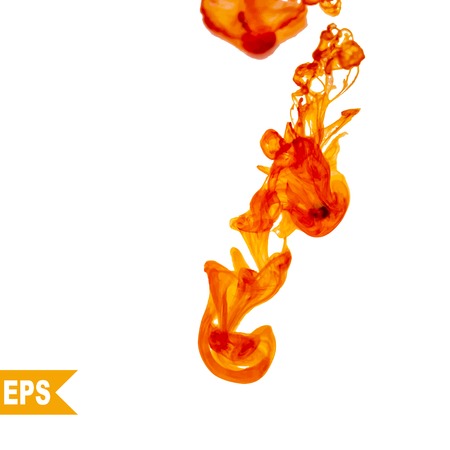Introduction to Qi and the Five Elements
Qi, often translated as ‘vital energy’, is a foundational concept in traditional Chinese philosophy, medicine, and martial arts. It refers to the dynamic life force believed to flow through all living things, shaping health, temperament, and the natural world. Central to this worldview is the theory of the Five Elements—Earth, Metal, Water, Wood, and Fire—which represent distinct yet interconnected phases or qualities of Qi. Each element embodies unique attributes and associations, from seasons and emotions to bodily organs and environmental conditions. In China, these elements have long informed holistic approaches to wellbeing and decision-making.
Within the context of British society, interest in the Five Elements has grown alongside wider engagement with complementary therapies and multicultural perspectives on health. While the language and cultural origins may differ from Western traditions, the core ideas resonate with contemporary trends in mindfulness, sustainability, and integrative wellness. Understanding the Five Elements not only bridges cultural knowledge but also offers practical frameworks for balance—whether in personal health practices, community initiatives, or environmental stewardship.
Earth: Grounding and Stability in Qi Flow
The Earth element occupies a pivotal role within the Five Elements theory, symbolising grounding, stability, and nourishment. In the context of Qi flow, Earth represents the centre point—the anchor that maintains equilibrium among all elements. This section explores the characteristics of the Earth element, its symbolic significance for balance and steadiness, and how these ideas resonate with values commonly found in British culture.
Key Characteristics of the Earth Element
| Characteristic | Description | British Cultural Resonance |
|---|---|---|
| Stability | Offers a foundation; supports other elements in maintaining balance. | Reflects the British appreciation for steadfastness and reliability in both social structures and personal conduct. |
| Nourishment | Provides sustenance and support for growth, both physically and emotionally. | Echoes traditions such as sharing meals or cultivating gardens—activities that foster community and well-being. |
| Centredness | Acts as a grounding force, preventing excess and imbalance. | Aligns with the British value of moderation and the ‘stiff upper lip’—maintaining composure during adversity. |
Symbolism in Maintaining Balance and Stability
The Earth element is traditionally associated with late summer or the transition between seasons—a time marked by harvest, reflection, and preparation. Symbolically, this links to the concept of being rooted yet adaptable, much like the countryside landscapes that are an enduring image of Britain. In Qi flow practices such as Tai Chi or Qigong, cultivating one’s Earth element encourages practitioners to find their centre before moving energetically into action.
The Earth Element in Daily Life
In a British context, the symbolism of Earth can be observed in daily rituals: from enjoying a cup of tea as a moment of pause to gathering around Sunday roast dinners. These practices reflect an underlying desire for security, tradition, and connection—a grounding influence amid life’s uncertainties. The emphasis on well-tended public parks or allotments further illustrates a collective nurturing spirit that echoes Earth’s qualities.
Earth’s Lessons for Modern Britain
The fast pace of modern British life sometimes challenges our sense of stability. Embracing the Earth element means recognising when to slow down, appreciate what grounds us, and foster environments—both at home and in community spaces—that nurture resilience. In doing so, we not only support our personal Qi flow but also contribute positively to collective well-being.

3. Metal: Clarity and Structure
The Metal element in the flow of Qi is often associated with qualities of clarity, precision, and structure. In the context of the Five Elements, Metal stands for the ability to define boundaries—both personal and communal—while also promoting a sense of order and discipline. These characteristics are particularly resonant within British culture, where values such as resolve, propriety, and respect for tradition are highly esteemed.
Defining Boundaries and Encouraging Order
Metal’s influence is most evident when it comes to establishing clear limits and frameworks. Just as metal can be shaped into strong, purposeful forms, this element encourages individuals to set healthy boundaries that protect well-being and foster mutual respect. Within society, this translates to an emphasis on social etiquette, codes of conduct, and maintaining civility—attributes deeply rooted in British life from queuing patiently to upholding fair play in public arenas.
The Discipline of Metal in Everyday Life
Orderliness is another hallmark of the Metal element. Whether it manifests as punctuality or meticulousness in daily routines, these traits ensure that tasks are carried out efficiently and responsibilities honoured. The British inclination towards reliability—being on time, fulfilling promises, and valuing consistency—reflects the disciplined nature of Metal Qi at work.
Metal and British Values
Perhaps most notably, Metal resonates with the British ideals of resolve and propriety. The unwavering determination to uphold standards, even in the face of adversity, mirrors the steadfastness that Metal imparts. Propriety—a careful observance of what is deemed appropriate—is similarly aligned with Metal’s insistence on clarity and distinction. Through its role in Qi flow, the Metal element not only supports individual development but also reinforces the collective ethos that shapes British identity.
4. Water: Adaptability and Reflection
Within the framework of Qi flow, the element of Water represents adaptability, emotional depth, and the capacity for reflection. In traditional Chinese philosophy, Water is seen as yielding yet powerful—able to adapt to its surroundings while shaping even the hardest stone over time. This metaphor holds particular resonance when considering how flexibility and resilience are valued within British culture.
Understanding Water’s Influence
Water’s core qualities—fluidity, responsiveness, and introspection—manifest both physically and emotionally. Just as water finds its path around obstacles, individuals who embody this element can adjust to changing circumstances without losing their integrity. In Qi flow practices, fostering the Water element supports one’s ability to manage stress and respond to life’s uncertainties with calmness and clarity.
Reflection and Emotional Depth
The reflective nature of Water encourages looking inward, promoting self-awareness and emotional intelligence. This mirrors a key aspect of British society: the value placed on composure, thoughtful consideration, and measured response in the face of adversity. Rather than reacting impulsively, there is a cultural inclination towards pausing, reflecting, and adapting strategies—a process closely aligned with Water’s essence.
Comparing Key Traits: Water Element and British Attitudes
| Water Element Qualities | British Cultural Parallels |
|---|---|
| Adaptability to change | Resilience in unpredictable weather or economic shifts |
| Emotional depth and reflection | Cultural appreciation for understatement and stoicism |
| Flexibility in approach | Emphasis on diplomacy and compromise |
| Ability to recover from setbacks | “Keep calm and carry on” mentality |
Nurturing the Water Element in Daily Life
Cultivating the Water element can involve practices such as mindfulness meditation, journaling, or simply taking time for quiet contemplation—habits that are increasingly recognised in Britain for supporting mental health. Embracing adaptability not only eases personal transitions but also strengthens collective resilience within communities. Ultimately, by understanding and integrating the lessons of Water into daily life, one can navigate challenges with a balanced blend of strength and sensitivity.
5. Wood: Growth and Renewal
Within the framework of Qi flow, the element of Wood is emblematic of growth, renewal, and dynamic progression. In traditional Chinese philosophy, Wood represents not only the onset of spring—a time when life bursts forth after winter’s dormancy—but also embodies the qualities of flexibility, resilience, and upward expansion. These characteristics can be thoughtfully paralleled with British values that celebrate innovation, adaptation, and continuity across generations.
The Essence of Growth and Innovation
Wood’s association with growth mirrors the British spirit of inventiveness and enterprise. Throughout history, Britain has been a cradle for pioneering achievements—from the Industrial Revolution to cutting-edge advancements in science and technology. Much like a tree’s ability to sprout new branches while remaining rooted, British society often honours its traditions while continually seeking new ways to evolve and improve. This balance between heritage and forward-thinking captures the essence of Wood in the context of Qi flow.
Adaptation and Flexibility in a Changing World
Another facet of Wood is its innate flexibility; trees bend with the wind rather than break under pressure. This quality resonates deeply within British culture, where adaptability has been key to navigating social, economic, and environmental changes over centuries. Whether facing shifting political landscapes or responding to global challenges, there is an enduring emphasis on resilience—an ability to renew oneself and thrive amidst uncertainty.
Continuity: Bridging Past and Future
The energy of Wood also symbolises continuity—the idea that growth is a process built upon what has come before. In Britain, this manifests as a respect for legacy institutions such as universities, the monarchy, and cultural traditions, all of which serve as foundations for ongoing development. At the same time, there is encouragement for fresh perspectives and creative problem-solving, ensuring that progress does not come at the expense of identity or stability.
In summary, examining Wood within Qi flow provides valuable insight into how growth, renewal, and innovation are interwoven not only in nature but also in the fabric of British society. It highlights the importance of balancing tradition with modernity—cultivating new possibilities while remaining firmly anchored to one’s roots.
6. Fire: Passion and Transformation
Within the framework of Qi flow, Fire is more than an element; it embodies passion, transformation, and the energetic spark that fuels ambition. The essence of Fire lies in its ability to ignite motivation and catalyse change—an energy that burns brightly in moments of inspiration and daring innovation. In the context of British culture, Fire’s dynamic qualities resonate with the nation’s storied tradition of creativity, from pioneering inventions during the Industrial Revolution to vibrant contemporary arts scenes.
The Motivational Force of Fire
Fire’s influence is most apparent where motivation meets action. This element is associated with enthusiasm, courage, and the willingness to take risks—qualities that are essential for personal and collective advancement. In British society, this manifests in a subtle yet steadfast drive for improvement, whether on the sporting field, within scientific research, or across entrepreneurial ventures. The ‘have-a-go’ spirit often referenced in the UK is a modern expression of Fire’s persistent energy.
Transformation Through Challenge
Transformation is at the heart of Fire’s nature. It represents not only external changes but also inner growth fostered by overcoming adversity. British history is replete with examples of resilience and reinvention—think of the post-war recovery period or the creative responses to social challenges. Each instance illustrates how embracing Fire’s transformative power can turn setbacks into opportunities for renewal.
Fire in British Creativity and Ambition
The UK’s contributions to literature, music, design, and technology are testament to a culture that values originality and bold thinking. From Shakespeare’s dramatic flair to modern-day innovators in tech start-ups, the impulse to challenge conventions and push boundaries draws upon Fire’s elemental energy. This creative ambition does not always announce itself loudly; instead, it may appear as quiet determination or a dry wit that masks deep-seated conviction.
In summary, the element of Fire offers a powerful metaphor for understanding how motivation and transformation shape individual lives and wider communities. Its energy underpins both grand achievements and everyday acts of perseverance—reminding us that, within the flow of Qi, every spark has the potential to ignite profound change.
7. Integrating the Five Elements in Contemporary British Life
As we reach the conclusion of our exploration into the Five Elements—Earth, Metal, Water, Wood, and Fire—it becomes clear that these ancient principles offer more than theoretical wisdom; they present a practical framework for enhancing well-being and balance in modern British society. Synthesising these elements means recognising their presence not only in nature but also within our homes, workplaces, and communities.
Applying Elemental Insights to Daily Routines
One of the simplest ways to embrace the Five Elements is by observing how their qualities manifest in everyday life. For example, Earth represents stability and nourishment, which can translate into cultivating supportive relationships or designing cosy home environments. Incorporating Metal might involve fostering clarity and organisation at work, while Water could be honoured through mindfulness practices that encourage adaptability and reflection.
Elemental Balance in Modern British Homes
Modern British interiors often blend tradition with contemporary design. Integrating the Five Elements can add a new dimension to this fusion. Consider using natural materials like wood for warmth or metal accents for sharpness and efficiency. Introduce houseplants or water features to foster growth and calm, reflecting Wood and Water respectively. Even lighting choices—warm tones for Fire, neutral shades for Earth—can shift the emotional atmosphere of a space.
Community Well-being Through Elemental Harmony
On a broader scale, these principles can shape community initiatives. Urban gardens (Wood and Earth), recycling schemes (Metal), communal art projects (Fire), or local riverside clean-ups (Water) all represent ways to foster harmony among residents while respecting both cultural heritage and environmental sustainability—a value deeply rooted in contemporary British consciousness.
Cultivating Personal Growth and Resilience
The dynamic interplay of the Five Elements reminds us that resilience lies in flexibility. In times of uncertainty—whether personal or societal—drawing on different elemental strengths encourages adaptability. For instance, tapping into Fire’s enthusiasm during creative projects or leaning on Earth’s steadiness when seeking comfort provides tailored strategies for navigating challenges unique to British life today.
Embracing Tradition While Moving Forward
The beauty of integrating Qi flow and the Five Elements is their compatibility with progressive values such as inclusivity, innovation, and respect for diversity. By appreciating these ancient concepts within a modern British context, individuals and communities alike can forge deeper connections with themselves, each other, and the environment—ultimately creating a more balanced and harmonious society.


